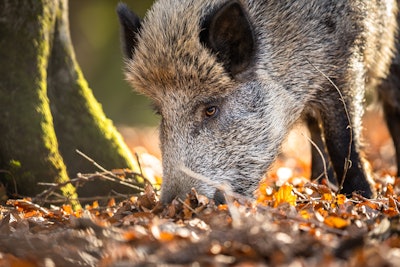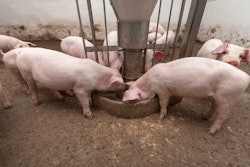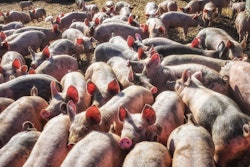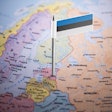
While the number of new confirmed cases of African swine fever (ASF) in wild boar continues to creep up in Sweden, the state veterinary institute SVA reports that routine testing procedures have now been established.
As of September 22, SVA reports that the total number of infections in this population stands at 41. All cases have been found in the initially designated core area.
Last week, the SVA reported that an ASF expert group from the European Union had visited the Fagersta area of Västmanland county, where the outbreaks have occurred over the past month. Offering advice on disease control, this group supported the Swedish authorities’ measures to date.
It remains a mystery how the ASF virus came to the area, in view of the fact that the nearest known outbreaks are far away. Human activity is suspected.
Over the past week, the national animal health agency has officially logged a further 21 ASF cases in wild boar.
According to the latest notification to the World Organisation for Animal Health (WOAH), the majority of the new cases continue to be found in Fagersta. Since September 10, four infected animals have been located in the adjacent municipality of Norberg.
Wild boar: 11 European states confirm new ASF cases
Up to September 22, the total number of ASF outbreaks across Europe has reached 6,339. This is according to the Animal Disease Information System of the European Commission (EC), which covers the European Union (EU) member states and immediate neighbors.
To date, 20 countries have registered one or more outbreaks through this system so far this year.
For comparison, there were a total of 7,442 outbreaks of ASF in wild boar across 15 European countries covered by the EC System in the whole of 2022.
Since the EC’s previous update dated September 8, 11 countries in this region have reported new ASF cases in this population.
Registering the highest number of outbreaks in this category so far this year is Poland with a total of 2,263. Following are Germany (now with 841 outbreaks in the wild population), Italy (790), Latvia (556), Slovakia (506) and Hungary (355).
In addition to these six nations, also reporting further ASF outbreaks to the EC System since the previous update were Croatia, Lithuania, North Macedonia, Romania and Sweden.
In September 2020, the ASF virus was detected for the first time in Germany. Since then, virus-positive cases in the country’s wild boar have reached 5,554, according to the national veterinary agency FLI (as of September 22). This figure includes 35 cases confirmed over the previous 28 days.
Outbreak total in European swine passes 3,000
In Europe, the total number of confirmed ASF outbreaks in domestic pigs has reached 3,158 so far this year, according to the EC System (as of September 22).
Since the previous update (dated September 8), the total has jumped by 715, although the number of countries with confirmed outbreaks remains at 16.
For comparison, 12 European states registered a total of 537 outbreaks in this population with the EC in the whole of 2022. Of these, 329 occurred in Romania.
Sharp rise in ASF outbreaks in Balkans’ backyard pigs
Underlying this sharp jump in confirmed outbreaks are new cases confirmed in the Balkans states, particularly in Bosnia-Herzegovina, Croatia, Serbia and Romania. Since the update two weeks previously, their totals had risen by 299, 194, 143 and 72, respectively.
Registering the highest number of outbreaks in domestic pigs with the EC so far in 2023 is now Bosnia-Herzegovina with a total of 869 outbreaks. Just behind comes Croatia (now with 863), and then Romania (662) and Serbia (651). Next highest national total is Poland with 25.
Further detail on recent outbreaks is registered by the national agencies with WOAH.
For Bosnia-Herzegovina, ASF has been confirmed at a further 333 locations — all of which were described as “backyards,” and in the Republic of Srpska. Most were located in the district of Bijeljina, with others in Doboj and Banja Luka. While the largest herd to be affected comprised 507 animals, the great majority involved fewer than 100 pigs. All these latest outbreaks started between the first and third weeks of August.
Over the course of a few days, the authority in Croatia officially confirmed 270 additional outbreaks, which all started around the beginning of August. Directly impacting more than 5,000 domestic pigs, these appear to have involved clusters of backyard herds in two districts in Vukovar-Srijem. Located in the northeast of the country, this country borders Bosnia-Herzegovina and Serbia.
Also registering new outbreaks with WOAH over the past week were Romania (26), North Macedonia and Poland (each with three) and Ukraine (one).
To WOAH, Moldova’s agency has declared the ASF situation “resolved” in the district of Cahul. In this southwestern district, three outbreaks in backyard herds occurred between the end of July and mid-August. No new cases have been detected since that time, and Moldova now has no ASF outbreak series.
View our continuing coverage of the global African swine fever situation.

















